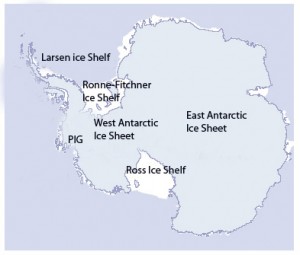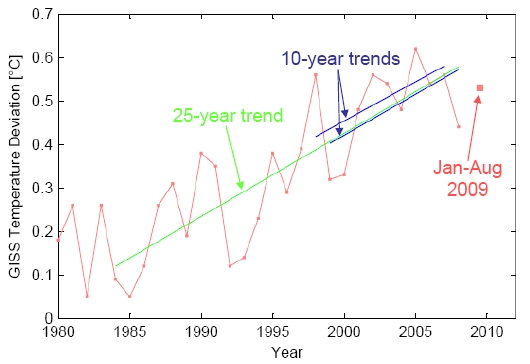Well, it’s not really all about me. But methane has figured strongly in a couple of stories recently and gets an apparently-larger-than-before shout-out in Al Gore’s new book as well. Since a part of the recent discussion is based on a paper I co-authored in Science, it is probably incumbent on me to provide a little context.
First off, these latest results are being strongly misrepresented in certain quarters. It should be obvious, but still bears emphasizing, that redistributing the historic forcings between various short-lived species and CH4 is mainly an accounting exercise and doesn’t impact the absolute effect attributed to CO2 (except for a tiny impact of fossil-derived CH4 on the fossil-derived CO2). The headlines that stated that our work shows a bigger role for CH4 should have made it clear that this is at the expense of other short-lived species, not CO2. Indeed, the attribution of historical forcings to CO2 that we made back in 2006 is basically the same as it is now.
[Read more…] about It’s all about me (thane)!
 It is popularly understood that glaciologists consider West Antarctica the biggest source of uncertainty in sea level projections. The base of the 3000-m thick West Antarctic Ice Sheet (WAIS) – unlike the much larger East Antarctic Ice Sheet – lies below sea level, and it has been recognized for a long time that this means it has the potential to change very rapidly. Most of the grounded West Antarctic ice sheet drains into the floating Ross and Ronne-Filchner ice shelves, but a significant fraction also drains into the much smaller Pine Island Glacier. Glaciologists are paying very close attention to Pine Island Glacier (“PIG” on map, right) and nearby Thwaites Glacier. In the following guest post, Mauri Pelto explains why.
It is popularly understood that glaciologists consider West Antarctica the biggest source of uncertainty in sea level projections. The base of the 3000-m thick West Antarctic Ice Sheet (WAIS) – unlike the much larger East Antarctic Ice Sheet – lies below sea level, and it has been recognized for a long time that this means it has the potential to change very rapidly. Most of the grounded West Antarctic ice sheet drains into the floating Ross and Ronne-Filchner ice shelves, but a significant fraction also drains into the much smaller Pine Island Glacier. Glaciologists are paying very close attention to Pine Island Glacier (“PIG” on map, right) and nearby Thwaites Glacier. In the following guest post, Mauri Pelto explains why.